15 Dec Case Study Looks at Impact of Third-Party Inspections
Code Issues With Insulation and Air Sealing Most Common Error In Multifamily Construction
Multifamily construction is a complex process with many players that can lead to mistakes, but a case study of 30 Georgia projects shows that third party inspections are helping to catch them. SK Collaborative reviewed a mix of new construction and renovation multifamily projects for its report: The Value of Third-Party Inspections: A Study of Georgia Multifamily Residential Developments and QAP Green Building Requirements.
Ten projects were market rate and 20 were financed with Low-Income Housing Tax Credit (LIHTC) awards under Georgia’s 2016-2019 Qualified Allocation Plans (QAPs). Of the 30 projects, 29 had at least one construction deficiency. All of the QAP projects had at least two (and as many as 20) issues.
“We get asked all the time whether site inspections are really necessary or can projects simply be designed to earn certification,” said Abe Kruger, SK Collaborative Principal. “The unfortunate reality is that quality assurance inspections are an essential facet of construction. The only way to ensure quality is through verification.”
Fifteen of the QAP projects pursued certification under NGBS Green, EarthCraft Multifamily, or Enterprise Green Communities. The other five LIHTC projects chose only to meet the state QAP prescriptive requirements for duct and envelope tightness and other sustainability items. Those pursuing green building certifications had more deficiencies than the other LIHTC and market rate projects.
“Green building programs are above code programs,” said Kruger. “They ask you to do more and prove it through 3rd party verification. So part of it is, we’re simply looking for more things.”
Kruger said there are two things that typically cause problems: 1) Contractors don’t realize they’re doing anything wrong because it’s at industry standard level. For example, insulation is pretty much always installed very poorly unless you explicitly require it be done per manufacturer’s instructions and verify it. Part of the solution is industry education. 2) A communication breakdown from decision makers and managers to the actual field crews. Using insulation as an example again, it’s fairly common for an onsite crew to not know the insulation will be inspected and held to a higher standard.
“Honestly, we didn’t find any surprises,” said Kruger. “We’re out there every day doing inspections and catching issues. We knew there were construction defects, but it’s great to have the severity of the problem quantified.”
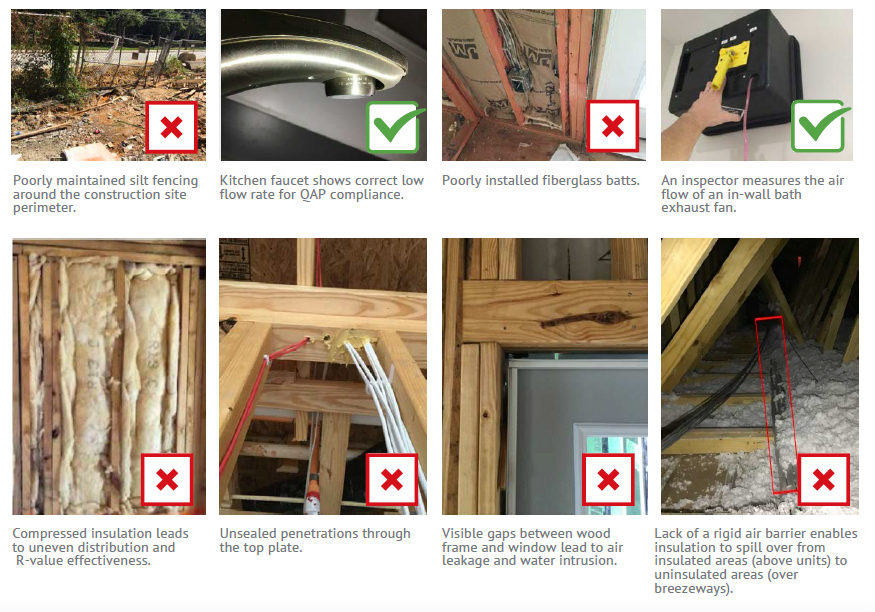
Examples of items documented during SK Collaborative field inspections.
Across all project types, SK Collaborative counted 135 total deficiencies at mid-construction and 88 total deficiencies during final inspection. The most common errors were basic energy code issues like properly installed insulation and air sealing. Code deficiencies include issues that overlap with energy, fire, mechanical, and building codes. Georgia requires blower door testing for residential buildings three stories and under as well as air sealing measures. The case study categorized air sealing and duct sealing deficiencies as code items during data collection.
The green building errors reflected specific program requirements and optional criteria. Some examples include poorly installed ductwork (excessive bends and crimps), non-specified HVAC filter installed, no rodent or pest screens over ventilation openings, missing dampers on bath exhaust duct work, inadequate construction site protection (erosion control, tree preservation), and window flashing.
“Issues are found even when you have the most detailed plans and specifications for the construction team,” said Kruger. “Your typical multifamily project will have hundreds, probably even over a thousand, different people working on it. It’s easy for things to go wrong. Luckily, most of the fixes are relatively easy.”
All projects in the case study — those pursuing green certification or just the core pre-2019 QAP sustainability points (“QAP-only”) — included third-party inspection mid-construction (immediately following insulation) and again when construction was substantially complete. While mid-construction inspections were optional for QAP-only projects, all of the reviewed projects included them. What’s important to know is that all mistakes were corrected as a result of the inspections.
“The other thing to remember is most people want to do good work,” said Kruger. “Your typical contractor is not waking up thinking of ways to do a bad job. A lot of our work is onsite education: explaining why things are required and how this will benefit the construction team, building owner, and residents.”
To access The Value of Third-Party Inspections case study, click here.


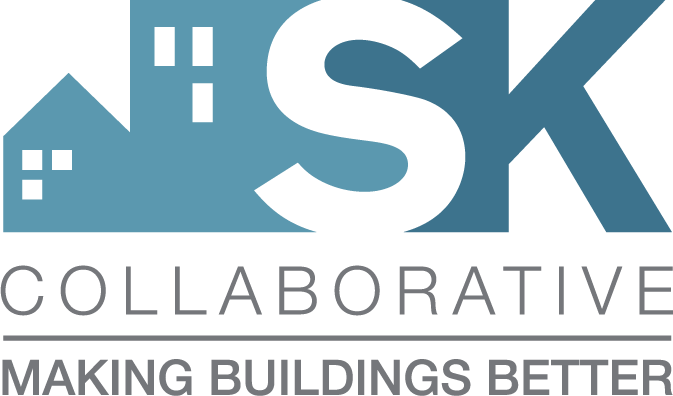
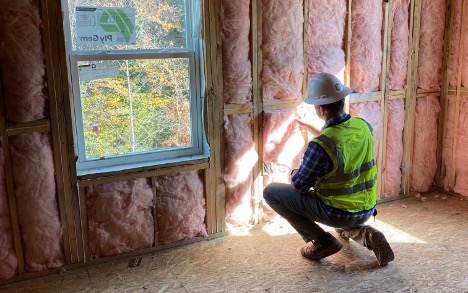
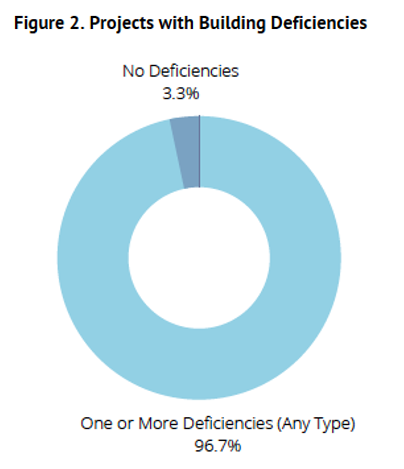
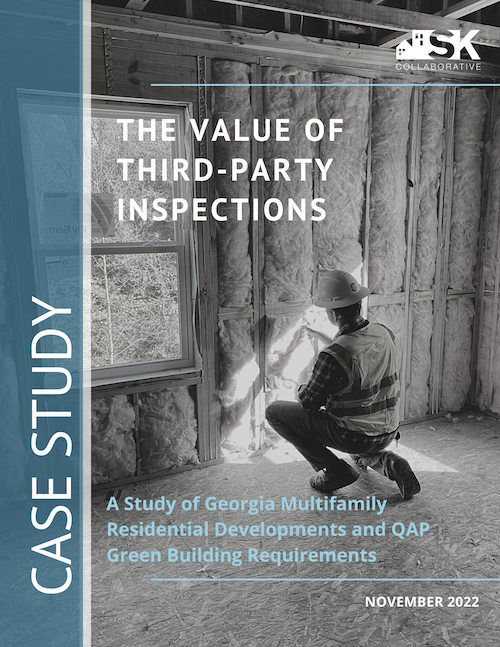
No Comments